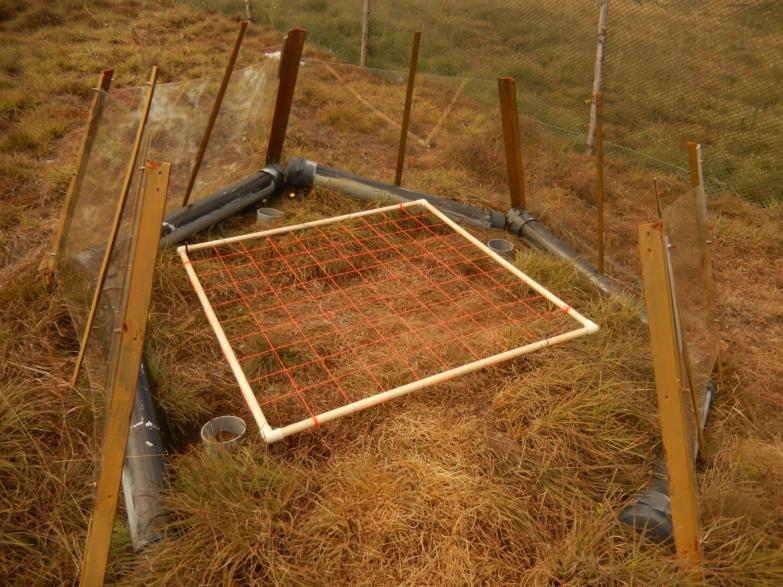Yadugiri V Tiruvaimozhi
In this project, we are setting up in-situ experimental warming plots in the Nilgiris, in the Western Ghats, India, to study vegetation and ecosystem process responses to temperature rise. This is the first of what we hope will eventually evolve into a series of long-term experiments, to contribute to a better understanding of global change effects on tropical, especially Indian, ecosystems.

Vegetation cover being measured in an OTC.
Global warming and its effects on ecosystems is a widely researched area, given its immediate importance for conservation of species and ecosystems. However, much of our understanding of ecosystem responses to warming and other global change factors comes from temperate regions, with very little known from tropical systems, and almost nothing from India.
Our work will focus on measuring the responses of plants to experimental warming in the grassland ecosystems in the high altitude regions of the Western Ghats, in terms of changes in plant species richness, community composition and dominance patterns. We will also compare the performance of the two major functional groups of plants on the basis of their photosynthetic mechanism (C4 grasses that currently constitute the grasslands, and C3 plants such as grassland herbs, invasives and plants from the adjacent forests), to predict the future trajectory of these grasslands under warming.
Specifically, the contributions of the project will be:
(a) To generate data on plant community responses to simulated warming in situ,
(b) To assess the level of threat from invasive species under higher temperature regimes,
(c) To synthesise these data to provide an ecological basis for managers and policy makers to plan for effectively conserving the unique biodiversity and landscapes of the Western Ghats in the face of a changing environment.
The larger objectives of the project include measuring responses of soil microbes and ecosystem processes such as soil respiration to temperature rise as well. Academically, the project will contribute data on ecosystem responses to warming from a region that receives > 2000 mm rainfall annually. Regions with such high annual precipitation have not been represented in global warming literature thus far. Further, the infrastructure set up and the data generated as part of the project will serve as a starting point for collecting sustained long term data to understand global change effects on Indian montane grassland ecosystems.